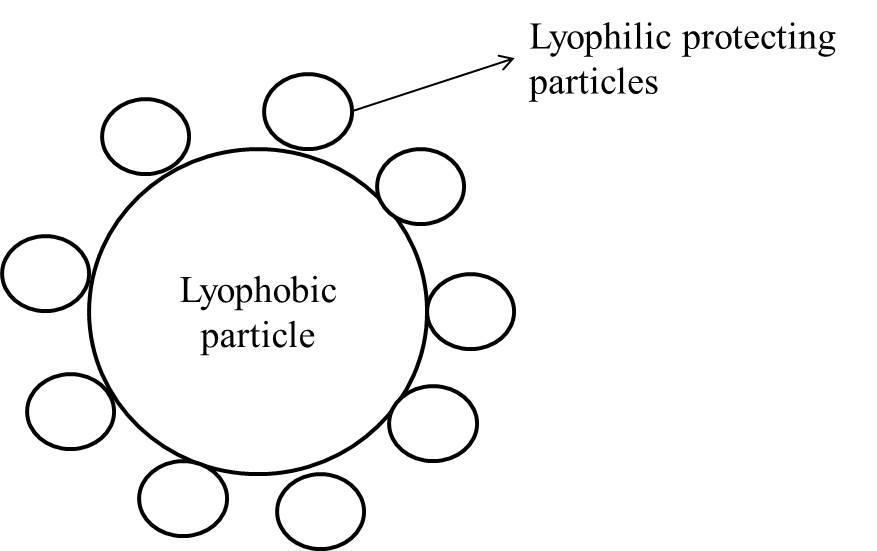
Gold number is a measure of:
A.The amount of gold present in colloidal solution
B.The amount of gold required to break the colloid
C.The amount of gold requires to protect the colloid
D.None of these
Answer
584.7k+ views
Hint: Gold number is the measure of efficiency to protect a colloidal solution from precipitation. If smaller the gold number value, higher the protective power of the colloid.
Complete answer:
Gold number: It can be defined as the number of milligrams of the protective colloid required to just prevent the precipitation of 10 cc of a gold sol by the addition of 10% NaCl solution.
Gold number is the degree of the minimum amount of lyophilic protective colloid coated (in mg.) on lyophobic particles to prevent the precipitation as shown in figure.

All the given options (A, B, and C) are not matching with the definition of the gold number.
Therefore the correct option is D, None of these.
Additional information:
From the above table we can say that Gelatin has higher protective power of the colloid because the gold number for gelatin is too less compared to other protective colloids.
Note: The influence of the hydrophilic colloid to stop the precipitation of a lyophobic colloid by the addition of an electrolyte depends upon the nature of the colloidal solution. The protective character of many hydrophilic substances can be stated quantitatively by using gold numbers.
Complete answer:
Gold number: It can be defined as the number of milligrams of the protective colloid required to just prevent the precipitation of 10 cc of a gold sol by the addition of 10% NaCl solution.
Gold number is the degree of the minimum amount of lyophilic protective colloid coated (in mg.) on lyophobic particles to prevent the precipitation as shown in figure.

All the given options (A, B, and C) are not matching with the definition of the gold number.
Therefore the correct option is D, None of these.
Additional information:
| Protective colloid | Gold number (in mg/cL) |
| Gelatin | 0.005 - 0.01 |
| Haemoglobin | 0.03 – 0.07 |
| Potato Starch | 20-25 |
| Gum Arabic | 0.15 - 0.25 |
| Sodium oleate | 1 - 5 |
| Dextrin | 125 - 150 |
From the above table we can say that Gelatin has higher protective power of the colloid because the gold number for gelatin is too less compared to other protective colloids.
Note: The influence of the hydrophilic colloid to stop the precipitation of a lyophobic colloid by the addition of an electrolyte depends upon the nature of the colloidal solution. The protective character of many hydrophilic substances can be stated quantitatively by using gold numbers.
Recently Updated Pages
The number of solutions in x in 02pi for which sqrt class 12 maths CBSE

Write any two methods of preparation of phenol Give class 12 chemistry CBSE

Differentiate between action potential and resting class 12 biology CBSE

Two plane mirrors arranged at right angles to each class 12 physics CBSE

Which of the following molecules is are chiral A I class 12 chemistry CBSE

Name different types of neurons and give one function class 12 biology CBSE

Trending doubts
One Metric ton is equal to kg A 10000 B 1000 C 100 class 11 physics CBSE

What is 1s 2s 2p 3s 3p class 11 chemistry CBSE

Discuss the various forms of bacteria class 11 biology CBSE

State the laws of reflection of light

Explain zero factorial class 11 maths CBSE

An example of chemosynthetic bacteria is A E coli B class 11 biology CBSE




